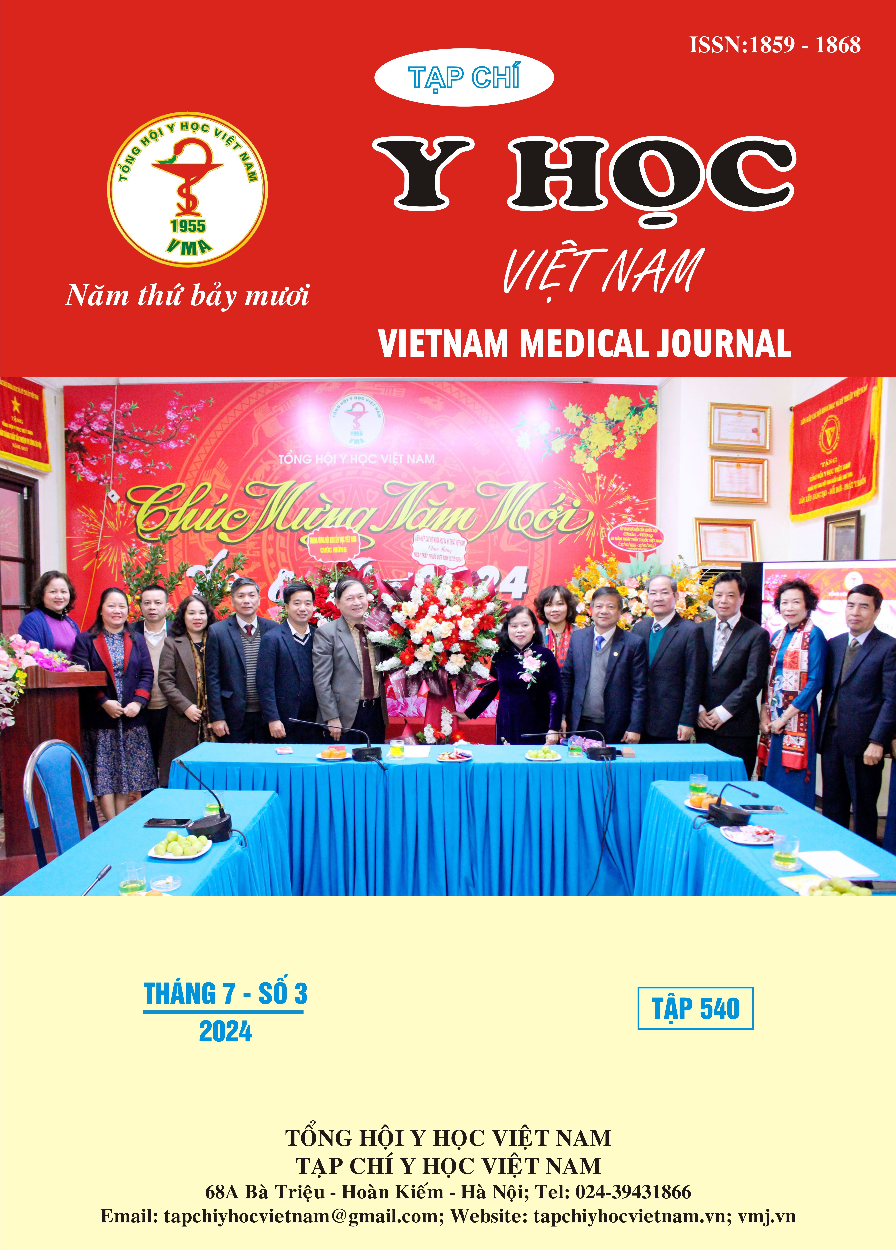INVESTIGATION ON KOJIC ACID FERMENTATION FROM ASPERGILLUS ORYZAE VTCC-F045
Main Article Content
Abstract
Kojic acid is widely used for its skin-whitening effect by inhibiting the activity of the tyrosinase enzyme in many fields, particularly in the cosmetic industry. Studies have shown that Aspergillus oryzae is capable of producing high yields of kojic acid, with potential for application in industrial production through fermentation. In Vietnam, studies on kojic acid fermentation from mold and assessment of the skin-whitening effects are limited. Our study focused on fermenting, purifying, and analyzing kojic acid in Aspergillus oryzae VTCC-F045 fermented media. We also looked at the fermentation parameters and tested how well the fermented media could inhibit the enzyme tyrosinase. The results showed that on a laboratory scale, Aspergilus oryzae can produce 12.2 g/l kojic acid from 10% glucose and 0.3% pepton culture media at 30°C, aerated for 12 days, with an initial pH control of 5.5; after 2-3 days, the pH is controlled to 2.5. At the same time, under test conditions, the fermented fluid showed enzyme tyrosinase inhibitory activity of up to 93.73%.
Article Details
Keywords
Aspergillus oryzae, fermentation, kojic acid, tyrosinase inhibition.
References
2. Barbesgaard Peder, Heldt-Hansen Hans Peter, et al. (1992), "On the safety of Aspergillus oryzae: a review", Applied Microbiology and Biotechnology, 36(5), pp. 569-572
3. Burdock George A, Soni Madhusudan G, et al. (2001), "Evaluation of health aspects of kojic acid in food", Regulatory toxicology and pharmacology, 33(1), pp. 80-101.
4. Chaudhary Jignesh, Pathak AN, et al. (2014), "Production technology and applications of kojic acid", Annual Research & Review in Biology, 4(21), pp. 3165.
5. Hazzaa MM, Saad AM, et al. (2013), "High Production of Kojic acid crystals by isolated Aspergillus oryzae var. effuses NRC14", J Appl Sci Res, 9(3), pp. 1714-1723.
6. Kwak Moo Young, Rhee Joon Shick (1992), "Cultivation characteristics of immobilized Aspergillus oryzae for kojic acid production", Biotechnology and bioengineering, 39(9), pp. 903-906.
7. Liljegren K, Svendsen A, et al. (1988), "Mycotoxin and exoenzyme production by members of Aspergillus section flavi", JSM Mycotoxins, 1988(1Supplement), pp. 35-36.
8. MASUDA T., YAMASHITA D., et al. (2005), "Screening for Tyrosinase Inhibitors among Extracts of Seashore Plants and Identification of Potent Inhibitors from Garcinia subelliptica", Bioscience, Biotechnology, and Biochemistry, 69(1), pp. 197-201.
9. Wakisaka Yasushi, Segawa Takayuki, et al. (1998), "Development of a cylindrical apparatus for membrane-surface liquid culture and production of kojic acid using Aspergillus oryzae NRRL484", Journal of fermentation and bioengineering, 85(5), pp. 488-494.


